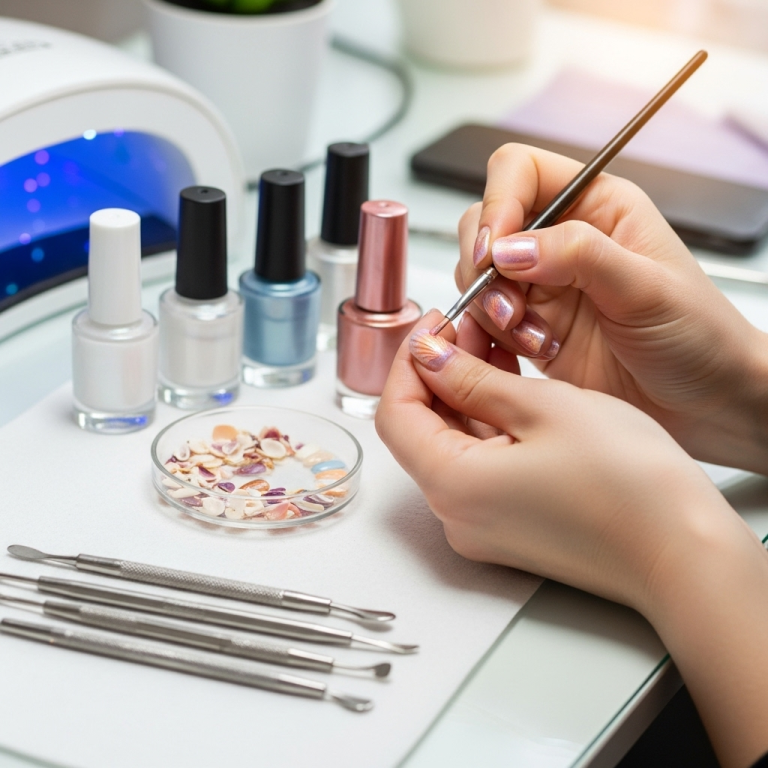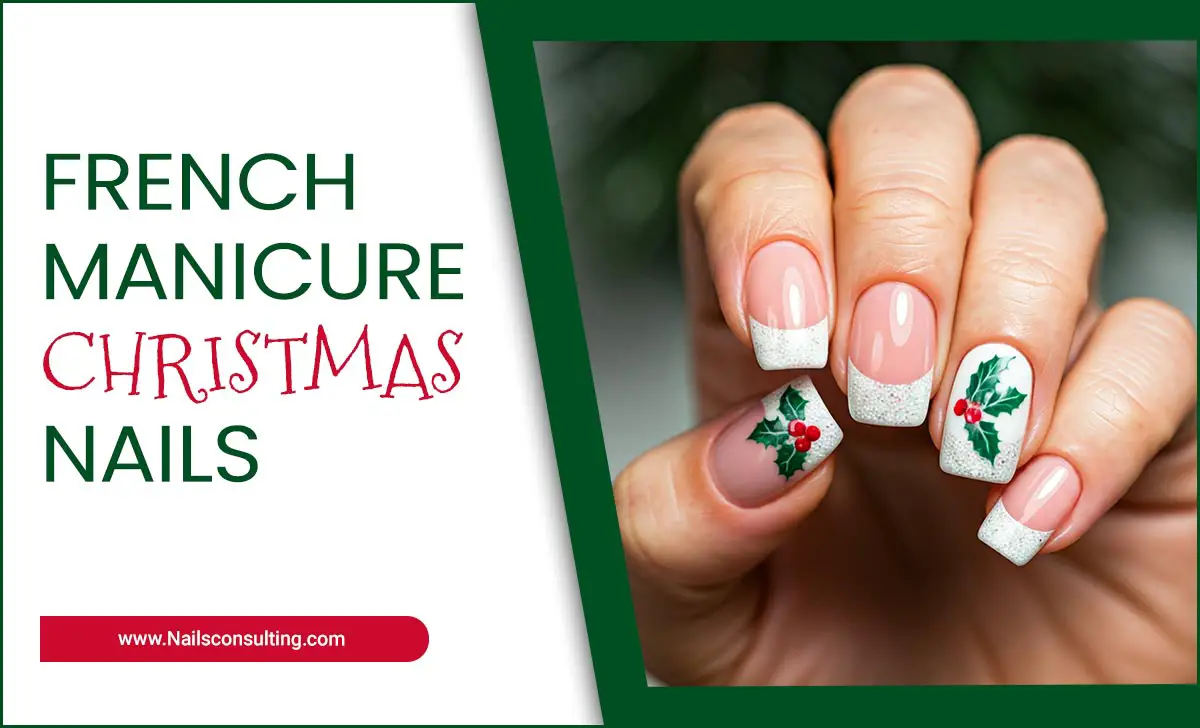Tropical nail art offers vibrant, fun designs perfect for vacations or adding a pop of color to your everyday look. This beginner-friendly guide covers essential designs, tools, and simple steps to create stunning tropical manicures at home, inspiring confidence and creativity with every brushstroke.
Hello, nail lovers! Are you dreaming of sun-drenched beaches and vibrant island flora? Sometimes, our nails can feel a little… ordinary. We scroll through endless nail inspo, wishing we could recreate those stunning designs, but they often look too complicated. Don’t worry! Getting beautiful tropical nail art is totally achievable, even if you’re just starting out. This guide is here to break down everything you need to know, from the easiest designs to the tools that will make you feel like a pro. Let’s dive into a world of color and fun for your fingertips!
Why Tropical Nail Art is Your Next Go-To Look
Tropical nail art conjures images of paradise: lush greenery, bright flowers, the sparkling ocean, and exotic fruits. It’s not just for holidays; it’s a way to bring a dose of sunshine and cheerful vibes into your everyday life. This style is incredibly versatile, allowing for endless creativity. Whether you love bold statements or subtle hints of the tropics, there’s a design for everyone. Embracing tropical nail art is a fantastic way to express your personality and boost your mood. Plus, with a few simple techniques, you can achieve salon-worthy results right at home, saving you time and money!
Getting Started: Your Tropical Nail Art Toolkit
Before we jump into the fun designs, let’s gather your essential tools. You don’t need a packed professional kit; a few key items will get you started on your tropical nail art journey.
Essential Tools for Tropical Designs:
- Base Coat: Protects your natural nails and helps polish adhere better.
- Top Coat: Seals your design, adds shine, and makes your manicure last longer.
- Nail Polish Colors: Think vibrant blues, greens, yellows, oranges, pinks, reds, and white/black for details.
- Dotting Tools: These come in various sizes and are perfect for creating dots, flowers centers, and patterns.
- Thin Nail Art Brushes: Essential for drawing lines, leaves, and intricate details. A fine-tip brush is a must-have.
- Toothpick or Orange Stick: Great for fine details, cleaning up edges, or even creating simple dot patterns.
- Nail Polish Remover: For quick cleanups of mistakes.
- Cotton Pads/Balls: To apply nail polish remover.
- Optional: Stencils or Nail Stickers: For quick and easy tropical motifs like palm leaves or pineapples.
Having these handy will make creating your tropical masterpieces so much easier and more enjoyable.
Essential Tropical Nail Art Designs for Beginners
Let’s get inspired! These designs are perfect for beginners and can be a great starting point for your tropical nail art adventures. Each one is designed to be achievable and stunning.
1. The Sunset Gradient
This design mimics the breathtaking colors of a tropical sunset.
What You’ll Need:
- Base Coat
- Nail polish in yellow, orange, and pink/red
- A makeup sponge (a clean kitchen sponge works too!)
- Top Coat
How to Create It:
- Apply a base coat and let it dry completely.
- Paint your nails with a light base color, like white or a pale yellow. This helps the gradient colors pop. Let it dry.
- On your sponge, apply stripes of yellow, orange, and pink/red nail polish next to each other.
- Lightly dab the sponge onto your nail, blending the colors. You might need to reapply polish to the sponge and stamp a few times to build up the color intensity.
- Clean up any polish that got on your skin with a cotton swab dipped in nail polish remover.
- Once dry, seal with a top coat.
2. The Simple Palm Tree Silhouette
A classic tropical motif that’s surprisingly easy to create.
What You’ll Need:
- Base Coat
- Nail polish in a sky blue or ocean blue
- Black or dark brown nail polish
- A thin nail art brush or a toothpick
- Top Coat
How to Create It:
- Apply your base coat and then paint your nails with the blue polish. Let it dry fully.
- Using your thin brush or toothpick and black polish, paint a thin, slightly curved vertical line for the palm trunk.
- At the top of the trunk, create a few simple, elongated leaf shapes by drawing curved lines radiating outwards. Think of simple elongated raindrops.
- Let it dry completely and then add a top coat.
3. The Fruity Accent Nail (Pineapple or Watermelon)
Add a fun, wearable pop of fruit with an accent nail.
What You’ll Need:
- Base Coat
- Yellow nail polish (for pineapple) or red nail polish (for watermelon)
- Green and black nail polish for details
- Thin nail art brush or toothpick
- Optional: White polish for watermelon rind
- Top Coat
For Pineapple Accent Nail:
- Paint your accent nail yellow. Let it dry.
- Using a thin brush and black polish, paint small horizontal lines or zig-zags across the nail to create the pineapple texture.
- Add a small green leaf shape or a few thin green lines at the top of the nail for a leafy crown.
- Seal with a top coat.
For Watermelon Accent Nail:
- Paint your accent nail red. Let it dry.
- If desired, paint a thin stripe of white polish along the top edge of the red. Let it dry.
- Paint a thin green stripe along the top edge of the white (or directly on the red if skipping white). Let it dry.
- Using a thin brush and black polish, randomly dot small oval shapes for watermelon seeds.
- Seal with a top coat.
4. Tropical Flower Power
Simple floral designs can bring the tropics to your fingertips.
What You’ll Need:
- Base Coat
- A bright base color (like white, coral, or turquoise)
- Nail polish in colors for your flowers (e.g., pink, yellow, red)
- A dotting tool (small size) or the tip of a toothpick
- Green polish for leaves (optional)
- Top Coat
How to Create It:
- Apply your base coat and a bright base color to your nails. Let dry.
- For simple hibiscus or plumeria: Dip your dotting tool or toothpick into your flower color. Place five dots in a circle to create petals with a small gap in the center.
- For flower centers: Use a different color (like yellow or white) and a small dotting tool to place a dot in the center of your flower.
- (Optional) Add small green leaf shapes near the flowers using green polish and a thin brush.
- Let everything dry and finish with a top coat.
5. Ocean Waves
Capture the essence of the sea with this flowing design.
What You’ll Need:
- Base Coat
- Nail polish in various shades of blue (light, medium, dark)
- White nail polish
- A thin nail art brush
- Top Coat
How to Create It:
- Apply your base coat and a light blue or white polish as your base. Let dry.
- Using your thin brush and medium blue polish, paint a wavy line across your nail, starting from one side and curving towards the other.
- Stagger another wavy line with dark blue polish slightly below the first one.
- Use white polish to add a few thin highlights or foam details on top of the blue waves.
- Let dry and seal with a top coat.
Level Up Your Tropical Nail Art: Intermediate Tips
Once you’re comfortable with the basics, you can explore slightly more intricate designs. These still remain beginner-friendly but add a bit more flair.
1. Detailed Leaf Patterns
Go beyond simple palm leaves with more detailed foliage.
What You’ll Need:
- Base Coat
- Green nail polish in a few shades
- A fine-tipped nail art brush
- Optional: Brown polish for vines
- Top Coat
How to Create It:
- Start with a neutral or light green base.
- Using a fine brush and a darker green polish, paint a central vein line down your nail.
- From this vein, draw curved lines outwards to create the shape of a monstera leaf or a fern frond. Don’t worry about perfection; organic shapes are key!
- Add some lighter green or even yellow as subtle highlights to give the leaves dimension.
- (Optional) Use brown polish and a very fine brush to add delicate vine details connecting elements.
- Seal with top coat.
2. Tropical Bird Accents
Add a touch of exotic wildlife with a simple bird silhouette or design.
What You’ll Need:
- Base Coat
- Bright colored polish (e.g., turquoise, coral, yellow)
- Black or dark blue polish
- Thin nail art brush
- Top Coat
How to Create It:
- Paint your nail with a bright base color. Let it dry.
- Using your thin brush and black/dark blue polish, paint a simple bird silhouette. This can be as basic as a small body with a tail and a wing shape.
- Alternatively, create a simple parrot or toucan shape with colored blocks (e.g., yellow body, orange beak).
- Let dry and apply top coat.
3. Shell & Seafoam Details
Incorporate beach elements with subtle shell shapes or foamy textures.
What You’ll Need:
- Base Coat
- Nude, white, or light blue polish
- A dotting tool or toothpick
- A fine brush
- White and light blue/green polish
- Top Coat
How to Create It:
- Apply a sandy nude or ocean blue base.
- To create a shell: Use a small dotting tool to make a swirl pattern, then add some fine white lines to mimic the shell’s texture.
- For seafoam: Use a thin brush to dab small white and light blue/green dots and streaks, creating a frothy effect.
- Let dry and seal with top coat.
Expert Tips for Long-Lasting Tropical Nail Art
Creating beautiful art is one thing, but keeping it looking fresh is another! Here are some tips to make your tropical manicures last longer.
- Prep is Key: Always start with clean, dry nails. Push back your cuticles and gently buff the nail surface for a smooth canvas.
- A Good Base Coat: Don’t skip this! It prevents staining and helps polish adhere better.
- Thin Layers are Best: Apply multiple thin coats of polish rather than fewer thick ones. This helps them dry faster and reduces the chance of smudging.
- Shake, Don’t Stir: When mixing polish colors, gently roll the bottle between your hands. Shaking can create air bubbles.
- Let Each Layer Dry: Patience is a virtue! Allow each coat of polish and each design element to dry thoroughly before adding the next.
- Seal with a Quality Top Coat: A good top coat is crucial. Apply it generously over your dried design, capping the free edge (painting a tiny bit on the very tip of your nail) to prevent chipping.
- Regular Touch-Ups: If you notice a tiny chip or wear on the edge, a quick touch-up with top coat can refresh your manicure.
- Protect Your Nails: When doing chores, wear gloves to protect your artwork from harsh chemicals and excessive water exposure.
Troubleshooting Common Nail Art Issues
Even the best of us run into little hiccups with nail art. Here’s how to fix some common problems without stressing!
1. Smudged Polish
Did you accidentally bump a wet nail?
Fix: Dip a clean-up brush (or toothpick) in nail polish remover and gently smooth out the smudge. If the smudge is severe, you might need to carefully repaint that section or the whole nail. Waiting for nails to dry fully is the best prevention!
2. Polish is Too Thick/Goopy
Old polish can become unmanageable.
Fix: Don’t add nail polish remover directly to the bottle, as it can break down the polish. Instead, use a nail art thinner designed specifically for this purpose. If you don’t have one, it might be time to invest in a new bottle of polish for smoother application.
3. Uneven Lines or Dots
Patience is needed for perfect lines and dots.
Fix: Use a fine-tipped brush and steady your hand by resting your pinky finger on a stable surface. For dots, ensure your dotting tool has enough polish but isn’t overloaded. Practice makes perfect! For minor mistakes, a clean-up brush with remover can gently reshape lines or dots.
4. Streaky Polish Application
Sometimes nail polish just doesn’t apply smoothly.
Fix: This often happens with lighter or chalkier finishes. Ensure you’re using thin coats and that your brush isn’t overloaded. A good top coat can sometimes help smooth out minor streaks. If it’s very noticeable, a glitter top coat can sometimes disguise minor imperfections beautifully!
Caring for Your Tropical Nails
Keeping your nails healthy while rocking bold art is easy with a few simple steps. Think of it as tending to your own little tropical garden!
Nail & Cuticle Care:
- Moisturize Regularly: Apply cuticle oil or a rich hand cream daily, especially after washing your hands. This keeps your cuticles soft and prevents hangnails, which can ruin any manicure.
- Hydrate Your Cuticles: Proper cuticle care is vital. Gently push back cuticles after a shower or using cuticle remover. Avoid cutting them aggressively unless you’re a trained professional, as this can lead to infection. The Centers for Disease Control and Prevention (CDC) advises against cutting cuticles to prevent infection. Visit CDC’s Salon Hygiene Guide for more on safe practices.
- Don’t Pick or Peel: Resist the urge to pick at your nail polish. This will damage your natural nail underneath and shorten the life of your manicure.
- Gentle Removal: When it’s time to change your design, use an acetone-free remover if possible, especially if your nails feel dry.
Maintaining Your Manicure:
Top Coat Refresh: Apply a fresh layer of top coat every 2-3 days. This adds extra shine and protection, extending the life of your artwork.
Avoid Harsh Chemicals: Wear gloves when cleaning or doing any task that involves prolonged contact with water or cleaning solutions.
By following these care tips, your stunning tropical nail art will stay vibrant and beautiful for longer, making you feel like you’re on an island getaway every day!
FAQ: Your Tropical Nail Art Questions Answered
Having your tropical nail art questions answered is important for a smooth and fun experience. Here are some common queries:
Q1: How long does tropical nail art usually last?
A1: With proper care and a good top coat, tropical nail art can last anywhere from 5-10 days, depending on your daily activities and how gently you treat your nails.
Q2: What are the best nail polish colors for tropical nail art?
A2: Think bright and bold! Vibrant blues, greens, teals, sunny yellows, hot pinks, fiery oranges, and even tropical fruit colors like pineapple yellow and watermelon red are perfect. Don’t forget white for highlights and black for outlines.
Q3: Can I do tropical nail art on short nails?
A3: Absolutely! Simple designs like fruity accent nails, gradient sunsets, or small floral accents look fantastic on short nails. Focus on clean lines and strategic placement.
Q4: My nail polish remover eats at my nail art. What should I do?
A4: Try using an acetone-free nail polish remover. Acetone is very strong and can sometimes dissolve intricate nail art too quickly. Apply it carefully with a cotton swab just to clean up edges, rather than soaking the entire nail.
Q5: How do I make my nail art less streaky?
A5: Apply polish in thin, even coats. Make sure your brush isn’t overloaded. Wiggle



